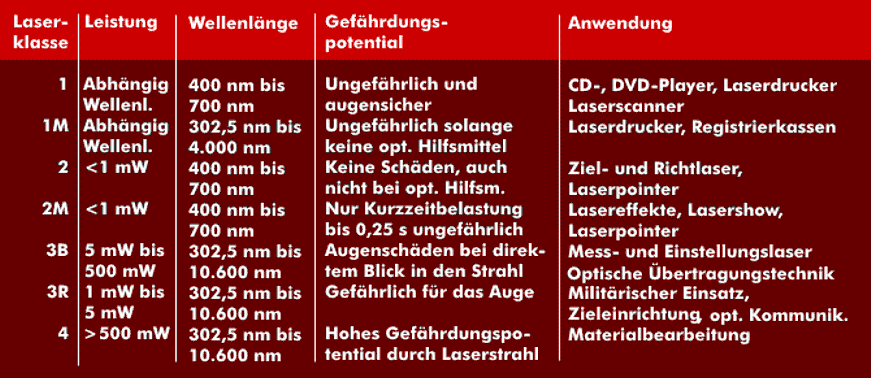laser class
The hazard potential of lasers for health and eyesight is divided into laser classes. Since there are lasers with visible wavelengths and others with non-visible wavelengths, certain precautionary measures must be taken when operating lasers. The hazard potential is essentially given by the wavelength, the laser power and, associated with this, the area of application.
The laser classes are designated with the numbers 1 to 4. The higher the laser class, the greater the hazard potential. Laser class 1 is harmless and can be used in laser scanners for iris recognition. Laser class 4 has a laser power of over 500 mW and thus the highest hazard potential.
DIN/VDE have developed relevant regulations and defined them in DIN EN 60825-1 in several laser classes. In addition to the known 5 laser classes 1, 2, 3A, 3B and 4, DIN added the laser classes 1M, 2M and 3R in 2004. 1M and 2M replace the laser classes 3A and 3R and are subordinate classes of 3B.
DIN EN 60825-1 (VDE 0837 T1 / IEC 825-1) describes the safety of laser equipment, the classification of equipment, requirements and user guidelines. DIN EN 60825-2 (VDE 0837 T2 / IEC 825-2) describes in part 2 the safety of optical transmission systems.

